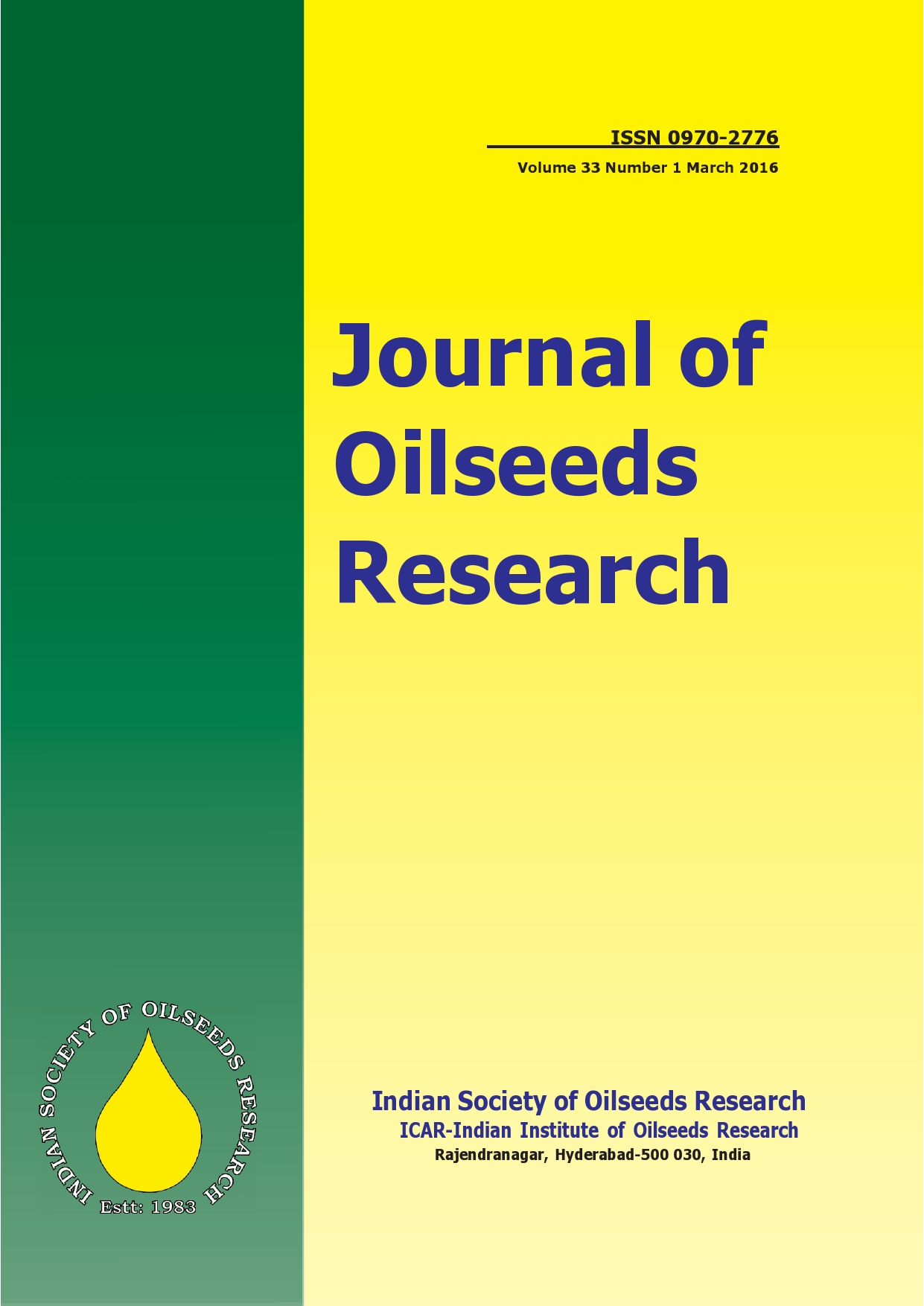Combining ability for seed yield and its components in castor (Ricinus communis L.)
COMBINING ABILITY FOR SEED YIELD AND ITS COMPONENTS IN CASTOR (RICINUS COMMUNIS L.)
105 / 0
Keywords:
Castor, Combining ability, GCA, Gene action, L x T analysis, SCAAbstract
Thirty two castor hybrids generated in a line x tester (4 lines x 8 testers) mating design were studied along with parents to estimate combining ability for ten characters in castor. The components of GCA and SCA from analysis of combining ability revealed that non-additive gene action was preponderance in the genetic control of all the characters studied except oil content, which controlled by additive gene action, while 100-seed weight indicated negative estimate. Among female parents, JP-96 was good general combiner for plant height, number of effective spikes per plant, 100-seed weight and oil content, while SKP-84 and SKP-106 were found good general combiners for number of nodes up to main spike, number of capsules on primary raceme and number of effective spikes per plant. For earliness, JP-96 and SKP-84 were found to be good general combiners. Among male parents, PCS-124 and SKI-271 were identified as good general combiners for plant height, number of nodes up to main spike, number of capsules on primary raceme and oil content. None of the parents was found as good general combiner for seed yield. Among the hybrids, JP-105 x SKI-271, JP-96 x SKI-294, JP-105 x SKI-291 and JP-96 x PCS-124 had high sca effects for seed yield per plot and other yield traits, were also accompanied with high per se performance; hence per se performance of the hybrids would be a good indicator for predicting sca effects. These hybrids could be exploited through heterosis breeding as these are expected to give desirable transgressive segregants in the succeeding segregating generation.
Downloads
References
Chandra Mohan Y, Vishnuvardhan Reddy A and Nageshwar Rao 2006. Inheritance of bloom nature in castor, Ricinus communis L. Journal of Oilseeds Research, 23(2):184-186.
Cochran W G and Cox G M 1957. Experimental Designs. John Willey & Sons, New York. pp. 107-108.
Kempthorne O 1957. An Introduction to Genetic Statistics. John Wiley & Sons, New York, 545 pp.
Madariya R B, Vaddoria M A, Mehta D R and Kavani R H 2008. Combining ability analysis over environment for seed yield and its components in castor (Ricinus communis L.). Crop Improvement, 35(2): 163-166.
Mehta D R 2000. Combining ability analysis for yield and its component characters in castor (Ricinus communis L.). Indian Journal of Agricultural Research, 34(3): 200-202.
Patel M S and Chauhan R M 2013. Study on gene action, heterosis and inbreeding depression for yield and quality traits in castor (Ricinus communis L.). Journal of Oilseeds Research, 30(2): 138-143.
Sridhar V, Dangi K S, Reddy A V, Sudhakar R and Sankar A S 2010. Combining ability studies for the related to earliness in castor (Ricinus communis L.). Research on Crops, 11(2): 479-482.
